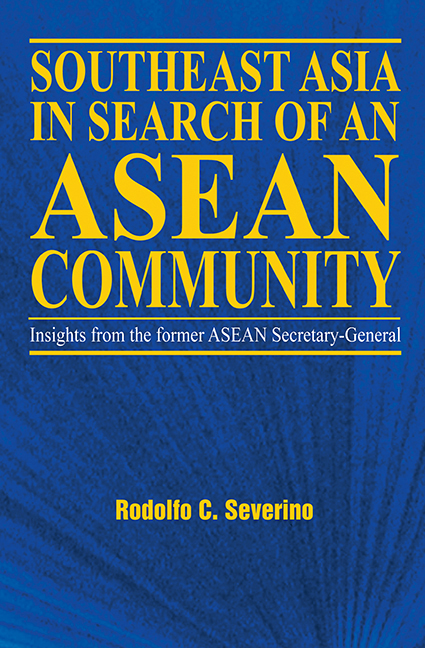Book contents
- Frontmatter
- Contents
- Foreword
- Introduction
- About the Author
- Acknowledgements
- Glossary
- 1 The “ASEAN Way”: Its Nature and Origins
- 2 Who Belongs in ASEAN? The Question of Membership
- 3 The Issue of Non-Interference
- 4 Regional Security: The ASEAN Role
- 5 Integrating the Regional Economy
- 6 ASEAN and the World
- 7 The ASEAN Community: Is It for Real?
- 8 What Kind of Future for ASEAN?
- Appendices
- Interviews
- Index
- Frontmatter
- Contents
- Foreword
- Introduction
- About the Author
- Acknowledgements
- Glossary
- 1 The “ASEAN Way”: Its Nature and Origins
- 2 Who Belongs in ASEAN? The Question of Membership
- 3 The Issue of Non-Interference
- 4 Regional Security: The ASEAN Role
- 5 Integrating the Regional Economy
- 6 ASEAN and the World
- 7 The ASEAN Community: Is It for Real?
- 8 What Kind of Future for ASEAN?
- Appendices
- Interviews
- Index
Summary
I decided to write this book in order to contribute to a better understanding of the Association of Southeast Asian Nations. I believe that such a better understanding is important. From the beginning, the five founding countries of ASEAN — Indonesia, Malaysia, the Philippines, Singapore and Thailand — saw the need to band together as a region, not just by themselves but, ultimately, with the rest of Southeast Asia, so that they would no longer go into confrontation with one another, so that their disputes would not turn into conflict, and so as to have greater weight in an increasingly complicated and still dangerous world. More recently, with the admission of five additional members — Brunei Darussalam in 1984, Vietnam in 1995, Laos and Myanmar in 1997, and Cambodia in 1999, they have begun to realize that they must progressively, steadily integrate their economies if they are to remain competitive in the scramble for markets, including their own, and for investment capital. And then there are the problems that are regional in scope, transcending national boundaries, and, therefore, call for regional action — environmental degradation, communicable diseases, transnational crime, and natural disasters. Yet, there remains much misunderstanding about what ASEAN is and how it does things, what it has been meant to be and do, what it has done and what it has failed to do, what it can and cannot do, and the promise of what it could yet become and accomplish.
The purpose of this book, then, is to seek to clarify some of these things in the hope that people will come to appreciate not only the value of ASEAN but also what it could still do. To live up to its potential, ASEAN needs not only the vision and drive of Southeast Asia's leaders but also the understanding and pressure of a wider segment of its people.
The book does not narrate a chronology of ASEAN's development. It does not analyse the association or any of its endeavours within the framework of a theoretical construct.
- Type
- Chapter
- Information
- Southeast Asia in Search of an ASEAN Community , pp. xi - xiiPublisher: ISEAS–Yusof Ishak InstitutePrint publication year: 2006



